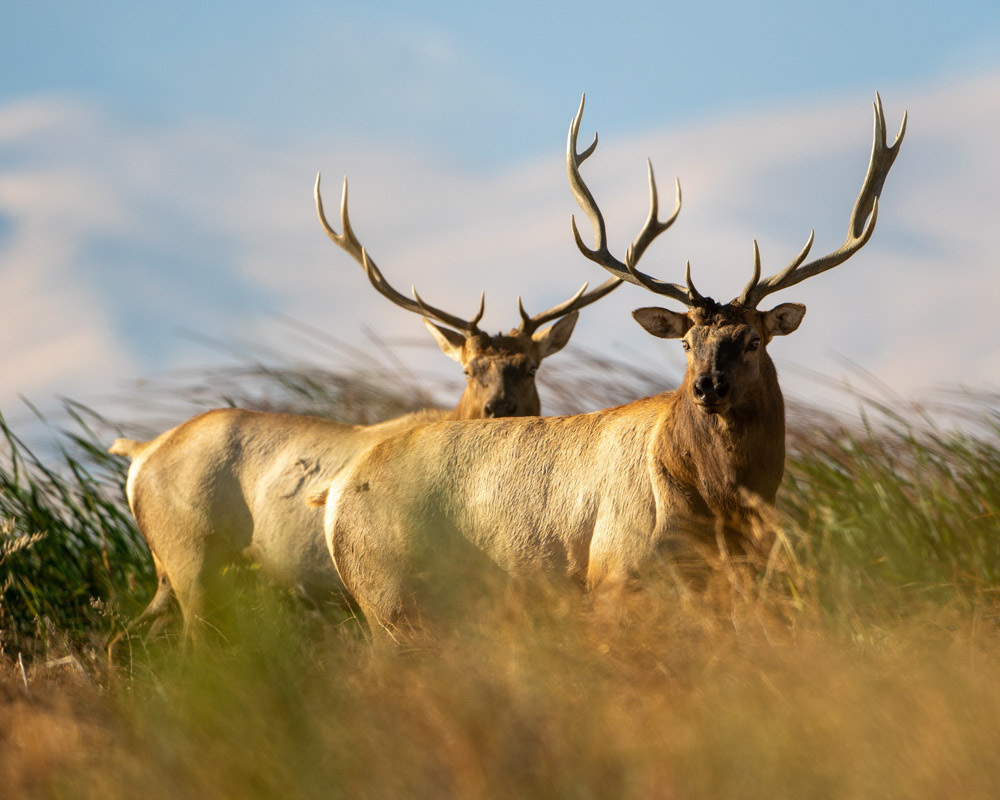Below is a Facebook post from the California Department of Fish and Wildlife.
California is home to three subspecies of elk, the Tule elk, Roosevelt elk, and Rocky Mountain elk. These beautiful animals are also called Wapiti, a word from the language of the Shawnee people referring to their distinct white rump. Elk are a social animal that establish resident herds year-round. Male elk, known as bulls, are well known for their distinct “bugle” to attract female elk, known as cows. Cow elk have their own calls that can sound like barking and lower-pitched calls to communicate with their young, known as calves.
A natural elk diet can consist of grasses, forbs, plants, trees, fungi and aquatic vegetation, with each subspecies preferring specific habitat. Tule elk are uniquely adapted to a Mediterranean climate and they currently range from the Central Valley to the Tehachapi and coastal mountain ranges. They are the smallest elk subspecies in North America with adult males weighing up to 550 lbs. and adult females up to 425 lbs. Roosevelt elk occupy a limited range in northwestern California with temperate rainforests. The Rocky Mountain elk are native to northeastern California but were introduced to the Tehachapi Mountains in Southern California in 1966 for hunting purposes. As elk populations grow, and climate change alters habitat suitability across subspecies, elk distributions may change. You can “Report an Elk Observation.” Observations reported via this tool assist with population monitoring efforts to improve our understanding of elk distribution and range expansion.
Unique human-wildlife interactions and/or potential unwanted encounters with elk can occur. Elk are known to cause damage to agricultural crops, orchards or vineyards, fencing and structures. During the breeding season (rut), drivers must be aware of increased elk crossings on or near roads as they seek mates. The Tule elk rut occurs August through December with peak rut from October to November. The Roosevelt and Rocky Mountain elk rut occurs from September through October. Go here to learn more!
(Photo credit: California Department of Fish and Wildlife)
